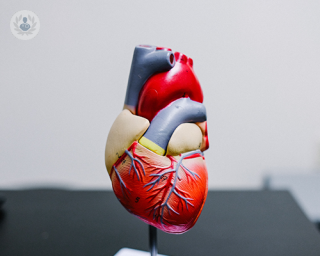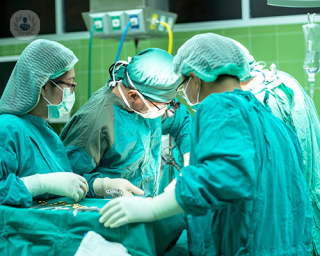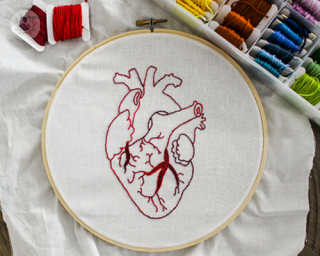Aortic valve replacement
Mr Vivek Srivastava - Cardiothoracic surgery
Created on: 08-01-2014
Updated on: 10-17-2023
Edited by: Aoife Maguire
What is aortic valve replacement?
The aorta is the main blood vessel which carries blood from the heart to the rest of your body. The aortic valve opens and closes to allow blood to flow out of the heart.
Aortic valve replacement is a type of open heart surgery which consists of removing a faulty or damaged valve and replacing it with a new valve. The new valve is made from synethic material or animal tissue.
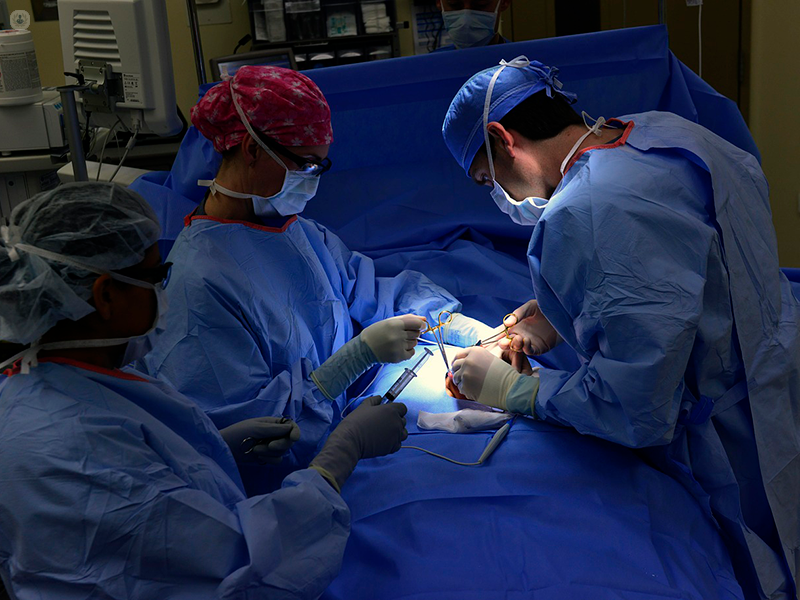
When is it necessary to replace an aortic valve?
This procedure is performed to replace a faulty aortic valve with an artificial valve. The aortic valve may be replaced because:
- The aortic valve stops blood from flowing back into the left ventricle, which is known as aortic regurgitation.
- The aortic valve has become narrowed and may struggle fully open, meaning less blood is able to leave the heart. This problem is called aortic stenosis.
If left untreated, this can lead to heart failure. Replacing the aortic valve may be recommended if you are at risk of serious complications because there are no medicines to treat aortic valve problems.
These faults with the valve can result from:
- congenital (birth) defects
- age
- bacterial infection of the valve
For both of these conditions, you may have experienced the following symptoms:
- dizziness
- swelling in the limbs
- shortness of breath
- fatigue
- chest pain
- syncope
How do I prepare for heart valve repair or replacement surgery?
Before undergoing surgery, you can speak to the doctor and ask any questions or doubts you may have. You will be asked to sign a consent form, which you should read carefully and ask questions if anything is unclear.
As well as looking at your complete medical history, your healthcare provider may do a complete physical exam to ensure that you are in good health before surgery.
You may need blood tests or other diagnostic tests. You must fast for eight hours before undergoing the procedure. If you smoke, you should stop smoking as soon as possible because this will improve your chances for a successful recovery from surgery, as well as benefiting your overall health status.
Before undergoing an aortic valve replacement you should inform your healthcare provider of any other medicines you may be taking and of any medical conditions you may suffer from, such as bleeding disorders.
Furthermore, you should inform the healthcare provider if you have a pacemaker or any other implanted cardiac devices.
How is an aortic valve replacement performed?
An aortic valve replacement is performed under general anaesthetic. During the procedure a large incision (cut) about 25cm long is made in your chest to access your heart. At times, a smaller incision may be made. Your heart will be stopped and a bypass machine will be used to replace heart function throughout the operation.
The damaged or faulty valve will be replaced with a new valve and the heart will be restarted. The opening of the chest will be closed.
This operation normally takes a few hours.
Before the surgery is performed, you will discuss whether a synthentic or animal tissue replacement valve is the best option for you.
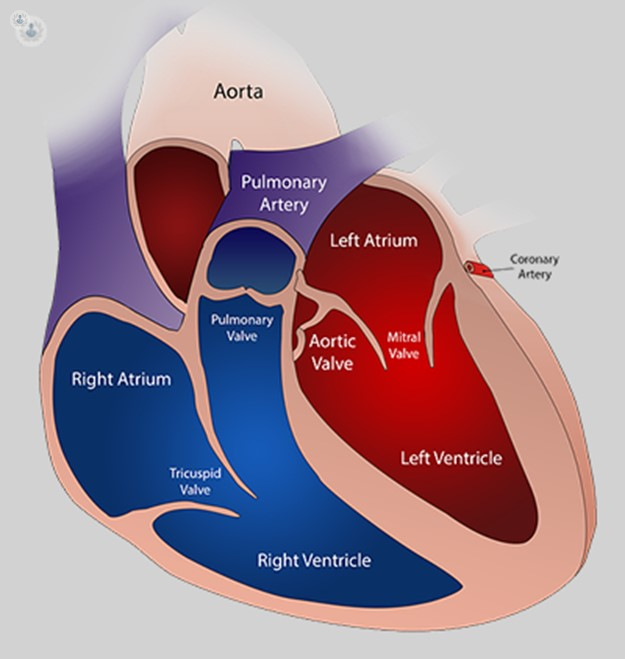
What are the risks of an aortic valve replacement?
Like any surgery, an aortic valve replacement carries some risks. Some potential risks are life threatening and include the following:
- excessive bleeding
- blood clots
- problem or failure of a replacement valve
- irregular heartbeat (arrhythmia)
- kidney problems
- infection
- stroke
- death
However, the risk of death is very low, less than 2% so it is not a major worry if you are planning to undergo an aortic valve replacement. The risk of death is a lot lower than the risk of leaving the aortic valve untreated.
Aftercare
Normally, you will need to stay in hospital for a week following an aortic valve replacement. However, it may take two to three months for full recovery.
Following surgery you should relax at home but can gradually return to work after a few weeks. Usually you are unable to drive for six weeks post-surgery and it is likely that you will need to take six to twelve weeks off work, although this time period may depend on your job.
Usually you are unable to drive for six weeks post-surgery and it is likely that you will need to take six to twelve weeks off work, although this time period may depend on your job.
What are alternatives to aortic value replacement?
Aortic valve replacement is not suitable for everyone. There are some alternatives that can be chosen instead of this surgery. These alternatives are as follows:
Aortic valve balloon valvuloplasty
An aortic valve balloon valvuloplasty involves passing a catheter (a thin plastic tube) through a large blood vessel, into the heart. Following this, a balloon is then inflated to open up the aortic valve.
An aortic stenosis cannot help with an aortic regurgitation. It is normally only recommended for people who are not suited to conventional open surgery and can also used as a short-term treatment for babies and children until they're old enough for valve replacement.
However, the effects may only last for up to a year. After this time, further treatment will be needed.
Transcatheter aortic valve implantation
This involves putting a catheter into a blood vessel of the upper leg or chest and then passing it towards the aortic value. The catheter is used to guide and fix a replacement valve over the original one.
The use of a transcatheter aortic valve implantation means that the heart does not need to be stopped, meaning that a bypass machine doesn’t need to be used, therefore avoiding a large chest incision.
It is appropriate for people who are too frail to have a conventional valve replacement as it puts less strain on the body. It may be as effective as surgery for people who cannot receive surgery, due to risk and difficulties.
The risk of having a stroke due to transcatheter aortic valve implantation is higher than other methods of valve replacement.
Sutureless aortic valve replacement
A sutureless aortic valve replacement is a new alternative to traditional open heart surgery.
There are no stiches involved to secure the valve in place. It is a good option for those who are more at risk of complications during a standard procedure.
This type of replacement carries the risk of a blood clot forming, which in turn, could lead to a stroke.
Can the body reject an aortic valve replacement?
All aortic valve replacements are biocompatible, meaning that the immune system will not reject them. A cardiologist performs aortic valve replacement.



